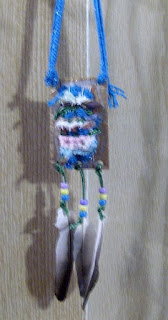Makey-Makey Art Camp continues at the Blackfoot Art Center!
For the last two class sessions (partially due to the heat) we moved indoors and explored our MakerSpace and the concept of making (which comes quite naturally to most young artists.)
Campers were challenged to make anything they liked from the materials available to them. They could choose from our Makers' handouts, such as Flexigon fidget toys or this balancing Robot.
This week we decided to make some duct tape projects. Shown here is a pencil pouch with a clear window and a ziplock closure.
 |
| Boys' wallet - outside |
We also made folding wallets such as this one. This folding wallet has a window pocket, two card pockets, a secret pocket, and pocket for bills!
 |
| Boys' wallet - inside |
We even made a special "Artistic License" to place inside the window pocket.
More custom made wallets:
Another option was to make something from our cardboard scrap pile and/or our junk box - I mean Treasure Chest! Or, campers could simply make something from a cardboard box. All of the studio supplies were available to them, including construction paper, glue, tape (six types!), staplers, markers, and anything else on our shelves.
I have learned that kids love to make things that they can use or play with later on, such as the balancing robot (shown above), or this Flexagon fidget toy...
... or this tabletop Skeeball game!
The game was constructed from a flat cardboard box and includes a rubber band marble launcher and a marble holder. It also folds for easy portability. Wow!
Also popular with Makers are models, which are the first step in the design process. Of course, some makers create a sketch first, but many dive right into building the model itself. Here is an intricate model of a vending machine, which was a collaborative project between two siblings.
 |
| Model of a toy vending machine |
 |
| Vending machine side opening |
 |
| Vending machine graphics |
























